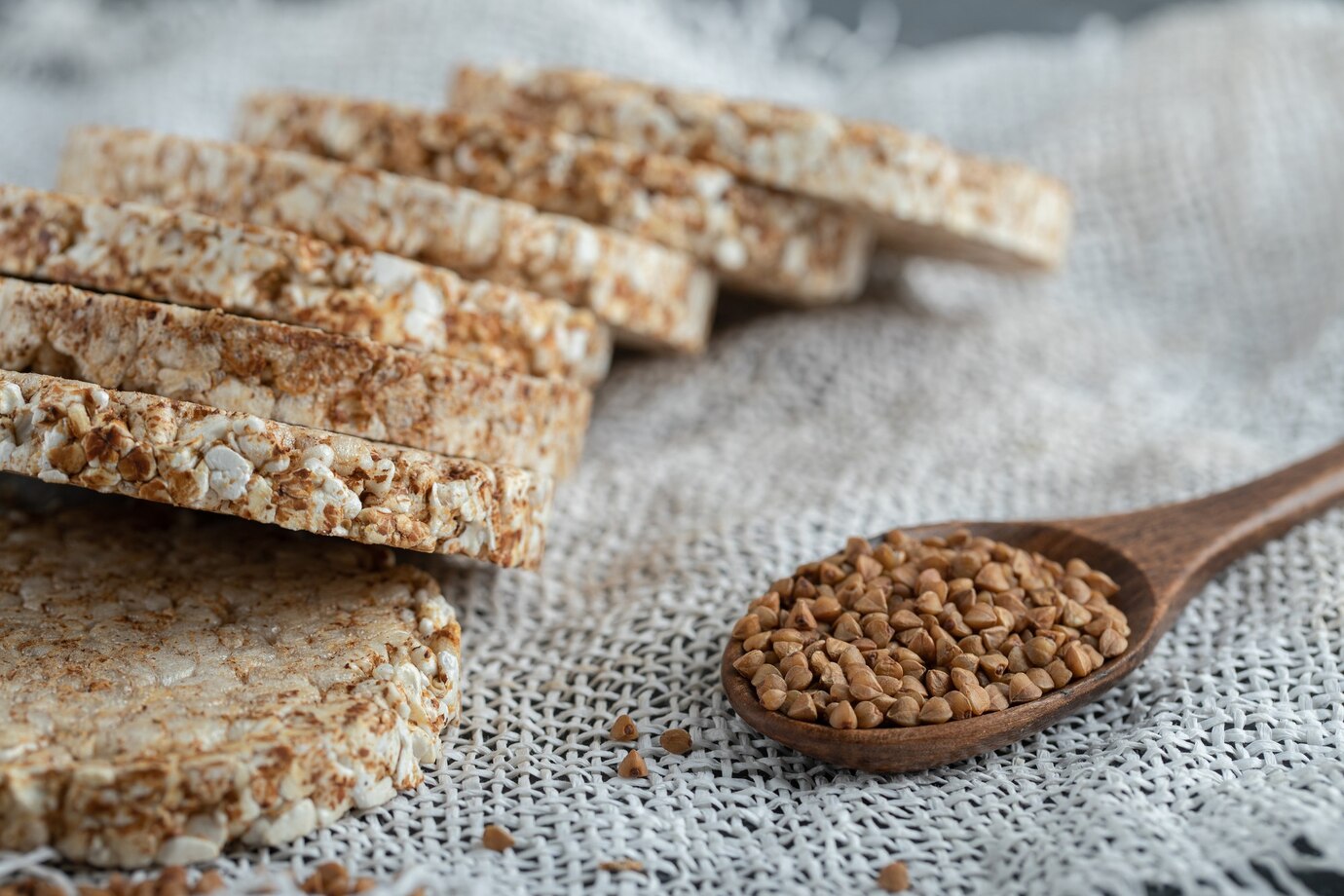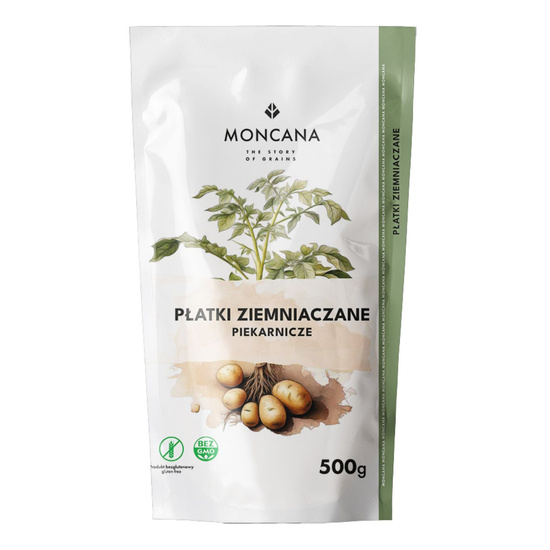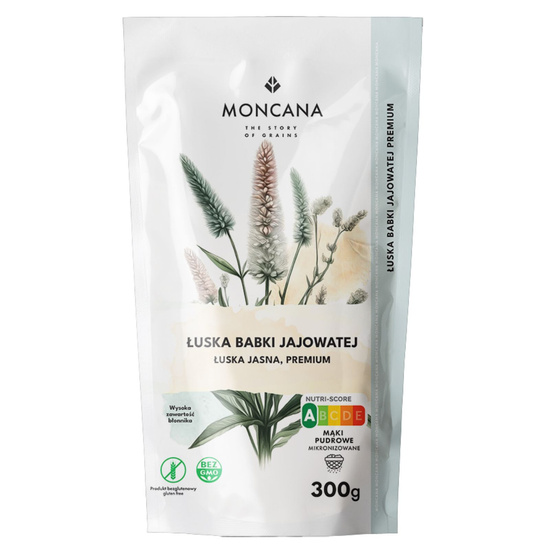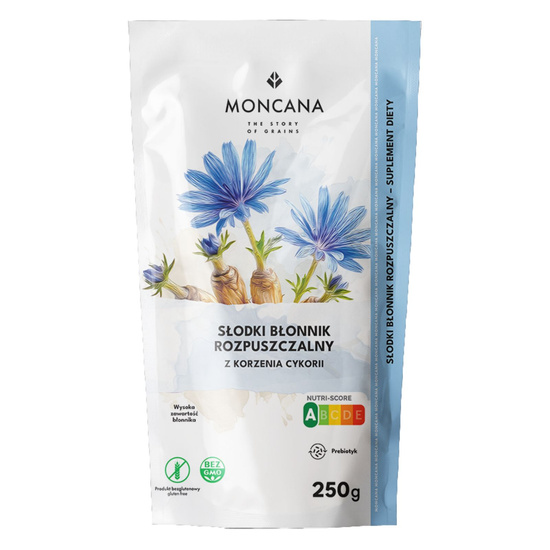Gluten-free diet - what to eat?

Gluten-free diet - what you are allowed to eat?
Gluten-free diet is essential for people with celiac disease and those who have gluten intolerance. Choosing the right products can be key to ensuring balanced and healthy meals. Below are products that what you can eat on a gluten-free diet to ensure that you get all the nutrients you need.
Naturally gluten-free products: corn, rice, potatoes, soybeans, buckwheat, millet, amaranth, cassava, legumes, sorghum
One of the cornerstones of a gluten-free diet is naturally gluten-free cereals and products. Among them, we distinguish:
- Corn: is versatile and can be used in the form of flour, porridge, and as a side dish.
- Rice: both white and brown rice are safe and an excellent source of carbohydrates.
- Potatoes: popular in many cuisines, are a versatile source of starch.
- Soybeans: in the form of tofu, miso, tempeh or soy milk, provides valuable protein.
- Buckwheat: rich in protein and fiber, ideal for cereals and flours.
- Millet: i.e. semolina and millet flour, easily digestible and rich in nutrients.
- Amaranthus: contains a lot of protein and fiber, excellent for baking and cooking.
- Maniok: used to make tapioca, popular in Asian cuisine.
- Legumes: lentils, chickpeas, beans are rich in protein and fiber.
- Sorghum: ideal for baked goods and as a substitute for rice or porridge.
Gluten-free protein sources: meat, fish, eggs
Protein is an essential part of your diet, and on a gluten-free diet, you can use a number of safe sources to ensure you get enough of it:
- Meat: all types of fresh meat, such as chicken, beef, pork, turkey, are naturally gluten-free. Avoid processed meats, which may contain gluten.
- Fish: fresh fish and seafood are excellent sources of protein and healthy omega-3 fats.
- Eggs: are a natural source of protein and can be prepared in many ways.
Vegetables and fruits as the basis of a healthy menu
Vegetables and fruits are a key part of a healthy gluten-free diet. All fresh vegetables and fruits are naturally gluten-free and are a rich source of vitamins, minerals and fiber.
- Vegetables: broccoli, carrots, spinach, tomatoes, cucumbers, lettuce, peppers, zucchini - all are safe and healthy.
- Fruits: apples, bananas, berries, citrus, grapes, strawberries - great for snacks and desserts.
What to eat on a gluten-free diet: grain alternatives and gluten-free flours
A gluten-free diet requires the elimination of all products containing gluten, which may seem difficult at first glance. Fortunately, there are many grain alternatives and gluten-free flours that can be successfully incorporated into daily menus.
- One of the most important elements of a gluten-free diet is the right flours and baking mixes. A variety of gluten-free mixes, which are perfect replacements for traditional wheat flours. Popular gluten-free flours are rice flour, corn flour, buckwheat flour, chickpea flour and coconut flour. These products are not only safe for people with gluten intolerance, but also rich in nutritional value. For those wondering what can be eaten on a gluten-free diet, these flours provide an excellent base for preparing a variety of baked goods.
- Groats and cereals are an excellent source of fiber, which is extremely important for the proper functioning of the digestive system. In a gluten-free diet, it is a good idea to reach for gluten-free groats, such as millet groats, buckwheat groats, quinoa groats and amaranth groats. However, be sure to choose products certified gluten-free to avoid gluten contamination. Gluten-free oatmeal are another great choice. Although oats are naturally gluten-free, they are often contaminated during processing, so it's a good idea to choose flakes labeled gluten-free. These flakes are ideal for breakfast in the form of oatmeal, and can also be added to cakes and muffins.
- Amaranth and quinoa are two cereals that are gaining popularity in gluten-free diets for their nutritional value and culinary versatility. Amaranth is rich in protein, fiber, magnesium and iron, making it an excellent choice for those looking for healthy alternatives. It can be used to prepare morning porridges, salads or as an addition to soups. Quinoa, also known as quinoa, is another treasure in a gluten-free diet. It is rich in protein, fiber, B vitamins and minerals such as magnesium and iron. Quinoa is versatile and can be used in salads, soups, as a side dish and even in desserts.
- Other alternative grains worth including in a gluten-free diet are sorghum, teff, and millet ie semolina. Each of these cereals offers unique health benefits and can help you maintain a varied and tasty diet.
Gluten-free diet vs. healthy fats and functional foods
A gluten-free diet is based on the elimination of gluten, a protein found in wheat, barley and rye. However, to stay healthy on a gluten-free diet, it is important to include healthy fats and functional foods. These ingredients play a key role in providing essential nutrients and supporting overall health and well-being.
In a gluten-free diet, it is a good idea to reach for organic oils, which are rich in healthy fats. Cold-pressed cumin oil is an excellent example of such a product. It is characterized by a high content of omega-3 and omega-6 fatty acids, which are essential for the proper functioning of the body. In addition, nigella oil has anti-inflammatory properties, which can help relieve inflammatory symptoms associated with autoimmune diseases, including celiac disease.
The importance of healthy fats in a gluten-free diet
Healthy fats are a key part of any diet, and in a gluten-free diet they play a particularly important role. When considering what to eat on a gluten-free diet, it's worth remembering fats help absorb fat-soluble vitamins, such as vitamins A, D, E and K, which are essential for the body to function properly. In a gluten-free diet, you can consume different sources of fats, such as:
- Olive oil
- Linseed oil
- Coconut oil
- Canola oil
- Clarified butter (ghee)
It is also worth remembering to avoid certain processed fats, such as margarines and some mayonnaise, which may contain traces of gluten.
Functional foods as support for health and well-being
Functional foods are products that have health benefits beyond their basic nutritional value. In a gluten-free diet, functional foods can support the immune system, improve digestion and support heart health. Examples of functional foods that can be incorporated into a gluten-free diet include:
- Probiotic yogurts to support gut health
- Products enriched with fiber, such as gluten-free oatmeal
- Products enriched with vitamins and minerals,phytoextracts (such as milk with vitamin D or functional oatmeal with dandelion)
- Superfoods such as chia, flaxseed and spirulina
Incorporating functional foods into a gluten-free diet can help maintain health and well-being while diversifying the menu and providing essential nutrients.
Gluten-free diet doesn't have to be boring at all! It can be not only tasty, but also full of valuable nutrients. By knowing what you can eat on a gluten-free diet, and by making informed food choices, you can enjoy health and a variety of flavors, even while following an elimination diet. Discover the wealth of gluten-free products available on moncana.pl and start your journey towards a healthier lifestyle today!



